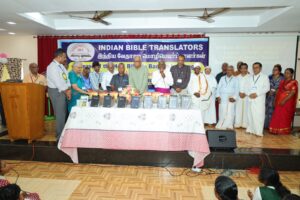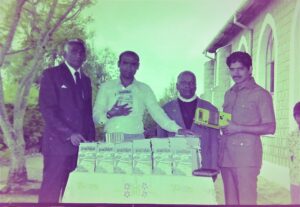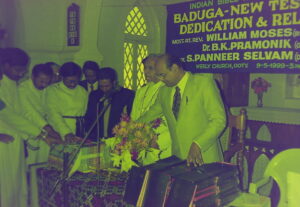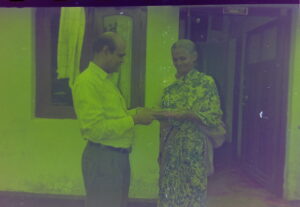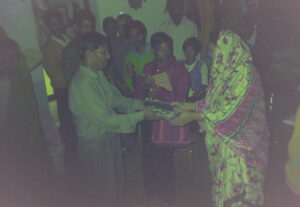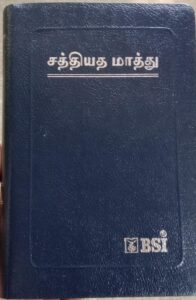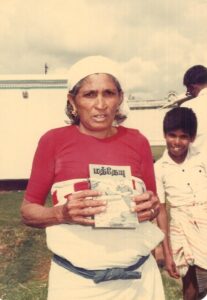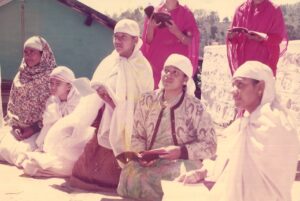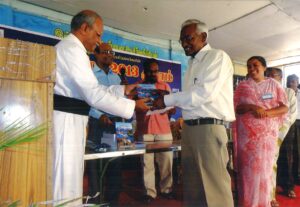Badaga Project
Introduction
The Badagas are the largest single ethnic group with their own language in the Nilgiri Hills, Tamil Nadu numbering around 3,00,000. Originally, they were buffalo herders with some subsistence cultivation for many centuries. Since the arrival of the British, they have taken up commercial vegetable cultivation and later became small-scale tea growers. A large number of them are also involved in various professions, such as government service, medicine, engineering, and teaching. The Badaga villages, called ‘Hattis’, are mainly spread across four taluks of the district—Ooty, Coonoor, Kotagiri, and Kundha. The women of the Badaga community are comparatively well-educated, and the literacy rate among both men and women is above 80%.
Gallery
Badaga Culture

Badaga Cultural Aspects:
The most elaborate ceremony among non-Christian Badagas pertains to funerals. In earlier times, the most important part of the funeral involved a buffalo calf being driven into the wilderness, after an elder recited a long prayer for the remission of the deceased individual’s sins. The striking similarity of this unique custom to the Levitical practice (Leviticus 16:21) has yet to be explained by anthropology. Nowadays, although no buffalo calf is involved in the ceremony, the recitation of the traditioThe Badagas have largely adopted Hindu customs and ceremonies in modern times. The Christian population is 0.29%. According to old records, they have appeared on the cultural scene only since around the 1870s. Though the religiosity of the present day Badagas seem to revolve around Hindu pantheon, the allegiance to the traditional and time honored Badaga beliefs are still intact. The two predominant religious observances of Badagas are that of Hetthai (A virgin ancestress) and Herodaiya (The Prognitor). He is also celebrated at the time of the first Harvest ceremony of the Badagas every year.
 Badagas Kin-groups:
Badagas Kin-groups:
The Badagas are divided into many kin-groups. Only those groups that can trace their ancestry back to a common forefather can be considered clan members. It is well established that one clan can intermarry with another. Most clans have their own sacred groves. Since 1858, there have been conversions to the Christian faith, and their descendants have maintained a separate identity. As a matter of fact, two bishops of the Church of South India have emerged from this small minority.
nal litany is still dutifully followed. A crucial aspect of the Badaga belief system is that no reference to rebirth is found anywhere.
Marriage customs:
In modern times, marriage customs sometimes include rituals borrowed from the larger society. However, priestly domination is absent from Badaga marriage ceremonies. A marriage always takes place in the bridegroom’s house. The most significant feature of the Badaga marriage system is the absence of dowry.
Transformation:
Food habits have undergone a radical transformation. The millets and cereals of earlier times have largely disappeared. Only during traditional festivals are tokens of old millets and cereals cooked and shared with the community. Modern Badagas are extremely well dressed. However, during certain festivals, traditional attire is worn, especially by women. Ancient forms of dance and related performances are still observed, albeit in a diluted manner. The old music tradition of the Badagas featured lengthy ballads accompanied by a traditional bamboo flute called the bugiri, which is no longer in use. Modern music performances among the Badagas attempt to fuse traditional melodies with contemporary styles. The Baduga language has no script. Though Kannada was used during the early missionary days, Tamil script is currently being promoted.
Translation Project
Rev. Prof. Panneer Selvam selected Badaga for translation in 1978 because the Badagas did not have Bible in their mother tongue. In 1980, Badaga believers gathered to worship God under the leadership of Pastor. Bellaraj at the Union Church in Ooty. Under IBT, C. Philip Krishnayya, who lived in Nilgiris, translated the Gospel of Mark into Badaga using Tamil script along with some special symbols to represent certain Badaga sounds. It (3000 copies) was released by Rev. William Moses at YMCA, Ooty on 21.09.1980.
Later, Pastor Muthan joined in the IBT to translate the Bible into the Badaga language. With the help of Caleb T. Bellan, Pastor Muthan reviewed the Gospel of Mark. Subsequently, he translated the other three Gospels. The Gospel of Luke was published in 1982. The Gospel of Matthew was released by former CSI Bishop of North Karnataka Rt. Rev. W. Victor Karl on 23.09.1984 in CSI Wesley Church Kottagiri, and the Gospel of John was dedicated by Rev. Robert Marcus and the first copy released by Rev. William Moses in the IBT Logos camp on 10.05.1985 at Stanes Higer Secondary School, Coimbatore with the support of Christian Industrial and Training Society. These gospel books were distributed to the Badaga people in their villages.
Later, retired teachers Mr. William and Mr. Bhaskaran translated the New Testament, and BSI (Bible Society of India) carried out the checking. The final review was assisted by brothers Chandran, Singan, and Alan. On May 9, 1999, the Badaga New Testament was officially released at the Wesley Church in Ooty by BSI General Secretary Dr. B. K. Pramonik, CSI Bishop & Moderator Most. Rt. Rev. William Moses, and IBT Founder Director Rev. Prof. S. Panneerselvam.
Following the release, Mr. Chandran resigned from his government teaching job and began distributing New Testaments and Tamil Bibles in the Badaga villages. The distribution received both acceptance and opposition. Seeing Chandran’s dedication to distributing the Badaga New Testament, IBT Director Rev. Prof. Panneerselvam encouraged him to undertake the translation of the Old Testament. In 2002, Chandran and his wife Anuradha joined IBT and underwent Bible translation training. They travelled frequently to the BSI office in Bangalore for checking, making use of different Tamil and English translations as advised by BSI.
Pastor Muthan collaborated with Chandran on checking and, along with Pastor Belliraj, reviewed books such as Psalms, Proverbs, Ecclesiastes, and Song of Songs using the UBS Translation Guide. The Book of Psalms was published by Rev. Dharmaraj 18.05.2013 at the Logos camp in Danishpet, Salem, and distributed among Badaga churches. Proverbs was released on 02.06.2014 TELC Church auditorium, and due to high demand, 3,000 additional copies were printed and distributed in 2018.
Since the Badaga language varies across regions, they had to consult native speakers to ensure accuracy. Rev. Philip K. Mulli provided valuable assistance in selecting appropriate terms for key biblical words. The Old Testament translation was completed by God’s great grace in December 2022 and submitted to BSI for final processing. Since the New Testament was translated nearly 20 years ago, Chandran retranslated it entirely. Thus, the Holy Bible in the Badaga language work was successfully completed by God’s immense grace, and it was released in IBT Logos camp on 11.05.2024 by former TELC Bishop Rev. Edwin Jayakumar. Most of the Bibles were distributed and second revision is in the process. Mr. Chandran and Mrs. Anuradha Chandran are the current translators of this Project.

Indian Bible Translators
14 Ashok Layout,
Civil Aerodrome Road,
Coimbatore – 641 014
- 90470 57414
- 90470 57414
- 0422 - 4520123
- info@ibtword.com
- indianbibletranslators@gmail.com
- Privacy Policy
Donate now by scanning our UPI QR code
through your payment apps.
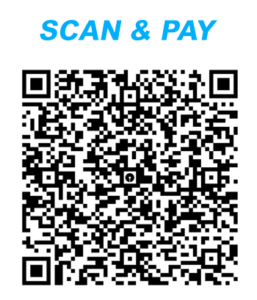
© Copyright IBT | Designed and Developed by Pixtornet

